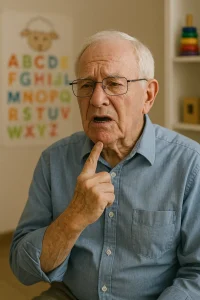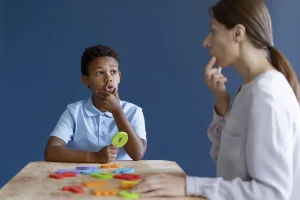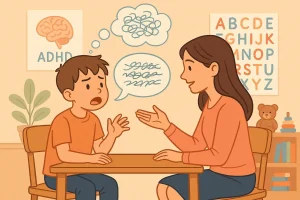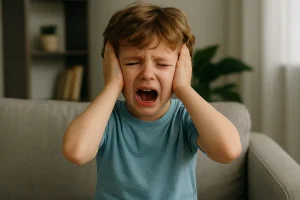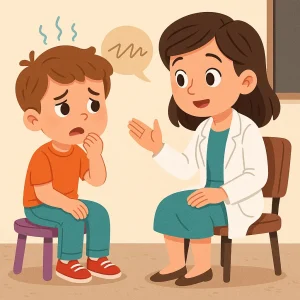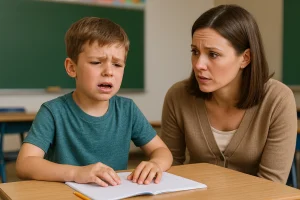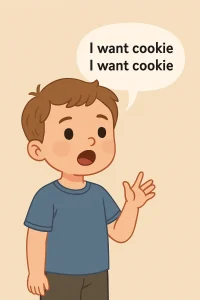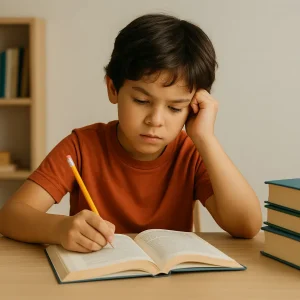WH Questions Bingo: A Fun Way for Kids to Learn Question Words
By Rajini D
Last Updated: February 17, 2025
Learning to ask and answer ‘Who, What, When, Where, Why, and How’ is crucial for children’s language development. WH Questions Bingo turns this essential learning into a fun game, making it an engaging way to teach children about question words. Ideal for both home and classroom settings, this game ensures that learning to communicate effectively is as enjoyable as it is educational. Dive into how WH Questions Bingo can be a playful part of your child’s daily learning adventure.
Also read: Why WH Questions Matter for Kids and How to Teach Them
What Are WH Questions?
WH questions are the tools we use every day to gather information, clarify confusion, and engage in meaningful conversations. These include the words “Who,” “What,” “When,” “Where,” “Why,” and “How.” Each one serves a unique purpose:
- Who is used to ask about people.
- What is concerned with things or activities.
- When queries about time.
- Where gives us information about place.
- Why asks for reasons or causes.
- How addresses the manner in which something is done or the condition of something.
Also read: WH Questions Examples for Kids: How to Teach with Fun Activities
How to Play WH Questions Bingo
Playing WH Questions Bingo is an excellent way to turn learning into a fun and interactive experience for children. Here’s a simple, step-by-step guide to get you started:
Step 1: Prepare the Bingo Cards
Each Bingo card should have a grid of squares, each containing a WH question word or a simple picture related to a potential answer.
Step 2: Gather Your Materials
You will need:
- Bingo cards
- Markers or chips to cover the squares
- A list of questions or prompts that correspond to the answers or words on the Bingo cards
Step 3: Explain the Rules to the Children
Make sure the kids understand the type of answers expected for each WH question. For younger children, using picture cards can help illustrate the concept.
Step 4: Start the Game
Draw a question from your list and read it aloud. Players find and cover the corresponding answer on their Bingo card with a marker or chip. For example, if the question is “Who barks?” children will cover the picture of a dog if it’s on their card.
Step 5: Check for Bingo
The first player to cover a complete row, column, or diagonal shouts “Bingo!” and wins the game. To ensure comprehensive learning, have the winner read the questions and answers aloud to reinforce their understanding.
Step 6: Keep It Engaging
Rotate the role of the question reader to give each child a chance to ask questions. This not only keeps the game exciting but also helps enhance their reading and questioning skills.
Step 7: Repeat and Reinforce
Play multiple rounds to cover different types of WH questions and answers. Each round can focus on different scenarios or themes, which keeps the gameplay fresh and educational.
Read More: How to Teach WH Questions to Toddlers and Preschoolers
Teaching Tips for WH Questions Bingo
WH Questions Bingo can be a powerful tool for language learning when used effectively. Here are some practical strategies for parents and educators to maximize learning and engagement during the game:
1. Encourage Detailed Responses
Instead of simply marking off answers, encourage children to expand on their responses. For instance, if the answer to “Who lives in the ocean?” is “fish,” ask follow-up questions like “What types of fish might live there?” This promotes deeper thinking and vocabulary development.
2. Use Visual Aids
Especially for younger children, visual aids can enhance understanding and retention of question words. Consider using images that depict actions or emotions to help explain concepts like “why” or “how.”
3. Model Questioning Techniques
Demonstrate how to ask and answer questions effectively. This could involve showing enthusiasm and curiosity in your own questions to inspire the same in children. For example, dramatically ask, “Where do you think the pirate buried the treasure?” and encourage creative answers.
4. Rotate Roles
Allow children to take turns being the question master. This not only keeps the game dynamic but also gives each child a chance to practice their questioning skills, which is crucial in mastering the use of WH questions.
5. Connect to Real-Life Experiences
Link the questions and answers in the game to real-life experiences to make the learning more relevant and memorable. For instance, if a child covers the answer “park” when asked “Where do you play?” discuss a recent visit to the park and what they enjoyed about it.
6. Provide Positive Feedback
Positive reinforcement can boost confidence and motivation. Praise correct answers and thoughtful questions, and gently guide incorrect answers towards the right responses.
7. Keep Sessions Short and Lively
Young children have limited attention spans. Keep the game sessions short and sweet, and vary the activities within the game to maintain high levels of engagement.
8. Reflect Post-Game
After playing, spend a few minutes discussing what everyone learned. This can reinforce the language skills practiced during the game and solidify the connection between the game and real-world communication.
How to Use Printable WH Questions Bingo Resources
Printing Tips:
- Use durable card stock for printing Bingo cards to ensure they can handle wear and tear from frequent use.
- Consider laminating the cards to make them reusable and easy to clean, especially useful in a classroom setting.
Game Preparation:
- Print enough Bingo cards for each player, and don’t forget to prepare a set of question cards based on the WH questions.
- Organize all your materials and ensure you have enough markers or chips for covering the Bingo squares.
During the Game:
- Distribute the Bingo cards to the players and explain the rules clearly, especially if you’re using a version of the game with a twist, like using images or complex sentences.
- Use the printable question cards to guide the game, drawing one card at a time and reading the question aloud to the children.
Post-Game:
- Use the printable materials to discuss the questions and answers. This can be a great opportunity for a mini-lesson on the types of questions and their uses in language.
- Store your materials properly to keep them in good condition for the next use.
Conclusion
WH Questions Bingo is not just a game—it’s a fantastic way to boost your child’s language skills while having fun. This game makes learning ‘Who,’ ‘What,’ ‘When,’ ‘Where,’ ‘Why,’ and ‘How’ an exciting adventure. We’ve shared easy steps to set up the game, effective teaching tips, and where to find printable resources. Ready to help your child master question words in a playful way? Try WH Questions Bingo today! For more creative educational games, visit Wellness Hub and discover new ways to make learning a joyous journey for your child.
Frequently Asked Questions:
1. What is WH Questions Bingo?
WH Questions Bingo is a fun, educational game that helps children learn and practice using question words like ‘Who,’ ‘What,’ ‘When,’ ‘Where,’ ‘Why,’ and ‘How’ through a familiar bingo format.
2. How can WH Questions Bingo help my child?
The game improves language skills by encouraging children to think about and answer different types of questions, boosting their understanding and use of language in everyday situations.
3. What age group is WH Questions Bingo suitable for?
WH Questions Bingo is ideal for children aged 4 to 8 years, as it helps with the development of basic question and answer skills during these formative learning years.
4. Where can I find printable resources for WH Questions Bingo?
Printable materials for WH Questions Bingo are available on educational websites, marketplaces like Teachers Pay Teachers, or directly from Wellness Hub, where you can download game sets designed for easy use.
5. Can WH Questions Bingo be played in groups?
Yes, the game is perfect for group settings, such as classrooms or small groups at home, making it a great tool for interactive learning among peers.
6. What materials are needed to play WH Questions Bingo?
You’ll need WH Questions Bingo cards, markers or chips to cover the answers, and a set of questions related to the answers on the bingo cards.
7. How long does a game of WH Questions Bingo take to play?
A typical game lasts about 10-15 minutes, making it a quick and effective educational activity that holds children’s attention.
8. Is WH Questions Bingo effective for language learning?
Absolutely! By actively engaging in question and answer sessions, children develop a deeper understanding of how to use question words and improve their communication skills.
9. How do I make WH Questions Bingo more challenging for older kids?
For older children, you can introduce more complex questions or use the game to reinforce learning in subjects like science or history by tailoring the questions to specific topics.
10. Can WH Questions Bingo be adapted for virtual learning?
Yes, WH Questions Bingo can easily be adapted for online play, making it a versatile tool for virtual classrooms or remote learning scenarios.
About the Author:
Rajini Darugupally
M.Sc., Speech-Language Pathologist (9+ years of experience)
Rajini is a passionate and dedicated Speech-Language Pathologist with over 9+ years of experience, specializing in both developmental speech and language disorders in children and rehabilitation in adults. Driven by a desire to empower each individual to find their voice, Rajini brings a wealth of experience and a warm, genuine approach to therapy. Currently, at Wellness Hub, she thrives in a team environment that values innovation, compassion, and achieving results for their clients.
Book your Free Consultation Today
Parent/Caregiver Info:
Client’s Details:
* Error Message
